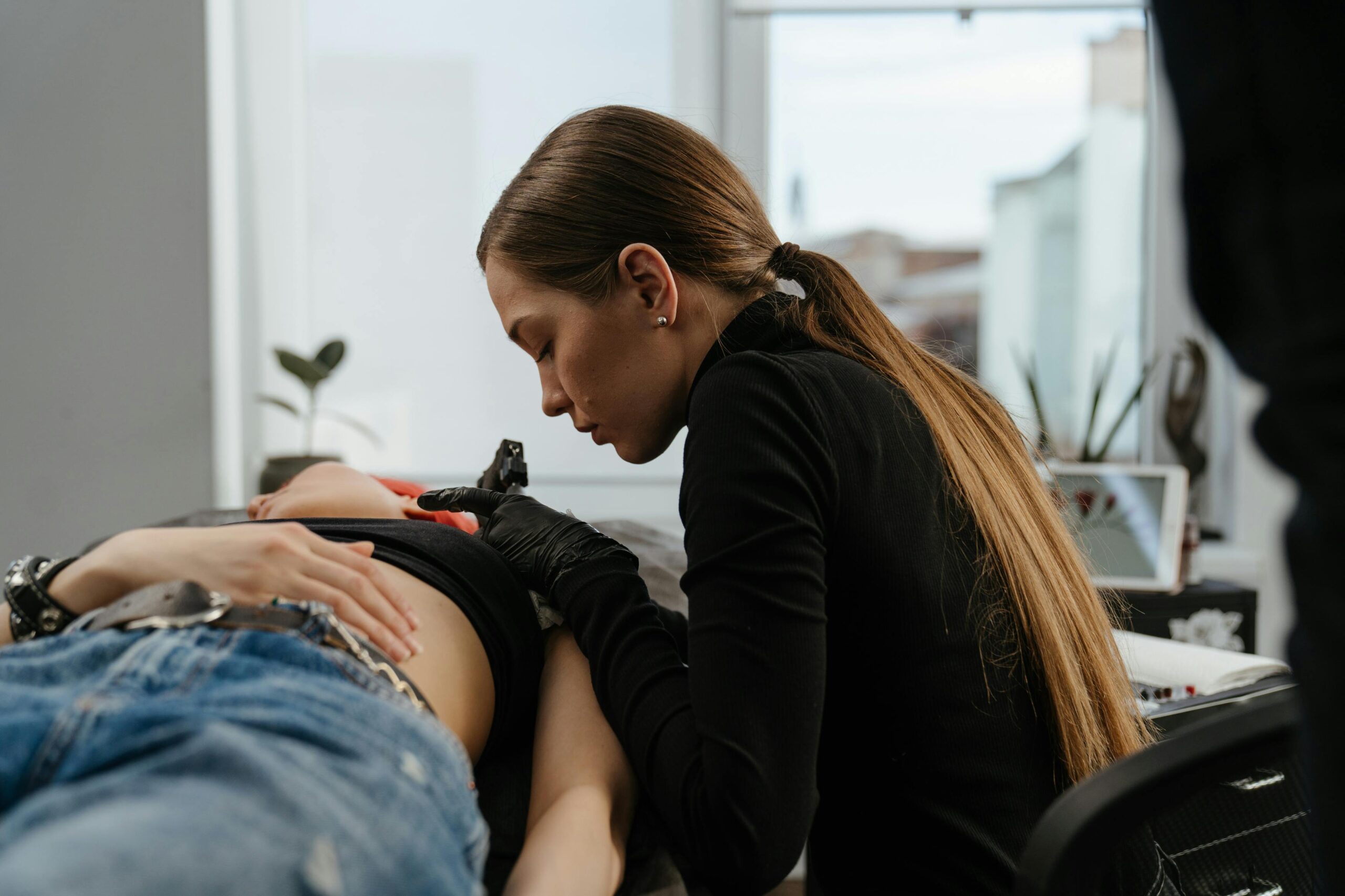Once upon a time, tattoos were considered taboo. Most people thought twice before getting a tattoo, because after all, “they are forever.” However, things have changed over the past two decades. Society has become more accepting of people with tattoos; they are more commonplace than ever. According to a Pew Research Center survey conducted in 2023, 32% of adults have tattoos and 22% of adults have more than one.
Perhaps the technological advancements in tattoo removal that render the “they are forever” sentiment untrue have also led to the increase in tattoos themselves. With the increase in tattoos, it follows that there would be a corresponding increase in demand for tattoo removal and that could be good news for you if you’re in the skin treatment business.
Choosing the best tattoo removal machine is a critical decision in the realm of aesthetic treatments. What should be considered when selecting the best tattoo removal machine for your practice? Evaluating various laser types, their effectiveness on different ink colors and skin types, and the importance of wavelength and pulse duration in tattoo removal are all important considerations. Let’s explore each of these.
Understanding Different Laser Technologies
The choice of laser technology is paramount in tattoo removal effectiveness. The pulsed or Q-switching laser has been considered the gold standard for tattoo removal since it was first commercially available in 1983. The Q-switch creates a high intensity photo-thermal pulse beam that lasts only a fraction of a second, which is successful in shattering the ink without damaging the skin.
Key laser types in tattoo removal include Q-switched Nd:YAG, Ruby, and Alexandrite lasers. It is difficult to declare one of them the best tattoo removal machine, because they differ with respect to the rate of clearing ink particles, effect on surrounding tissue, beam profile, wound healing, and side effects.
Nd:YAG (neodymium-doped yttrium aluminum garnet) lasers are one of the most common types of laser; they use a crystal in which the neodymium ions provide the lasing activity. Known for their versatility, they are used in numerous and varied applications. Nd:YAG lasers are effective on a wider range of ink colors and skin types and tend to have little to no incidence of hypopigmentation, but they do yield more textural changes. Nd:YAG is superior in the removal of red tattoo ink colors, though.
Red chromium ions provide the lasing activity in ruby lasers. The ruby laser is essentially absorbed by the ink and leaves surrounding skin intact, which minimizes bleeding both during and after the treatment. Emitting a shorter wavelength, ruby lasers are particularly effective for removing blue-black ink and have a notable advantage over other lasers for removal of green pigment, but they also tend to have a higher incidence rate of long-lasting hypopigmentation.
Alexandrite lasers offer an alternative to Nd:YAG and Ruby lasers and are considered the weakest of the Q-switch lasers. They are very effective in removing black pigment, but only moderately effective in removing blue or green pigment. Alexandrite lasers have little to no effect with respect to red, orange, and brown ink pigments.
The Significance of Wavelength in Tattoo Removal
Light energy is visible only within certain frequencies, when its wavelength is between 390 nm (on the indigo/blue end of the spectrum) and 700 nm (on the red end of the spectrum). Understanding how different wavelengths correspond with the visible light spectrum is crucial in determining a laser’s effectiveness on various ink colors.
We see the colors that correspond to the light reflected by an object we’re looking at, so when we see red, that means an object absorbs all the other colors besides red. When we shine a laser on a tattoo we want to remove, the goal is for the ink to absorb the light from the laser so that it shatters and leaves the body. Therefore, it follows that different wavelengths are necessary to target different ink colors more effectively.
For example, shorter wavelengths are typically better for targeting lighter inks, while longer wavelengths are suitable for darker inks. Shorter wavelengths should be used to target tattoos on the orange-red end of the spectrum and longer wavelengths are ideal for tattoos with colors on the indigo-blue end of the spectrum. To put it another way, if the goal is to remove a tattoo with red ink, avoid treatment with red light.
The best tattoo removal machine to get the job done for the most clients will be equipped with lasers that have adjustable wavelengths, which can provide more flexibility and treat a wider range of tattoo pigments.
Pulse Duration and its Impact on Tattoo Removal
Pulse duration plays a significant role in the tattoo removal process. Shorter pulse durations can break down ink particles more efficiently and with less skin damage. The aforementioned Q-switched laser creates a beam that lasts about one billionth of a second.
Technologies like picosecond lasers are growing increasingly popular, quickly outpacing the previous technology and taking its seat among the best tattoo removal machine lineup due to their shorter pulse durations of one trillionth of a second. Shorter pulses minimize heat spread to surrounding tissues, increasing effectiveness and reducing the risk of scarring and skin discoloration.
Considering Skin Types in Tattoo Removal
It’s essential to choose a machine that is suitable for a wide range of skin types to cater to a diverse clientele. By nature, because lighter skin does not significantly absorb laser light, the laser energy is focused on the tattoo pigment lighter skin responds better to the tattoo removal process. Darker skin attracts a portion of the laser light away from the tattoo.
Because tattoo removal is all about concentrating the laser light on the ink, and the goal is to return the skin to its original pre-tattoo condition, a major concern is avoiding scarring or discoloration to the skin.
A more powerful laser can be used for lighter skin, while a less powerful laser is safe for darker skin tones. This means tattoo removal on darker skin will likely require more time or more treatments. The best tattoo removal machine for treating the widest array of clients with varying skin tones is one with adjustable settings that allow for customization according to the client’s skin type, reducing the risk of adverse effects.
Find the Best Tattoo Removal Machine for Your Practice with Laser Resellers
Selecting the best tattoo removal machine involves a thorough understanding of laser technologies, wavelengths, pulse durations, and skin type considerations. When it’s time to buy, consider the benefits of purchasing a used laser and if you aren’t sure where to turn when it comes to finding a trustworthy, legitimate company from which to purchase a used laser body sculpting machine, look no further than Laser Resellers.
We guarantee that every laser you see on our website is in stock and ready to ship. Plus, when you invest in one of our lasers, you can be confident that the laser you order is the laser you’ll receive. We thoroughly inspect and maintain each laser before it’s shipped to ensure that it’s in perfect working condition. And, if you encounter any issues within 30 days of your purchase, we offer a no-hassle money-back guarantee.
Get help finding the best tattoo removal machine for your business, contact us today!




